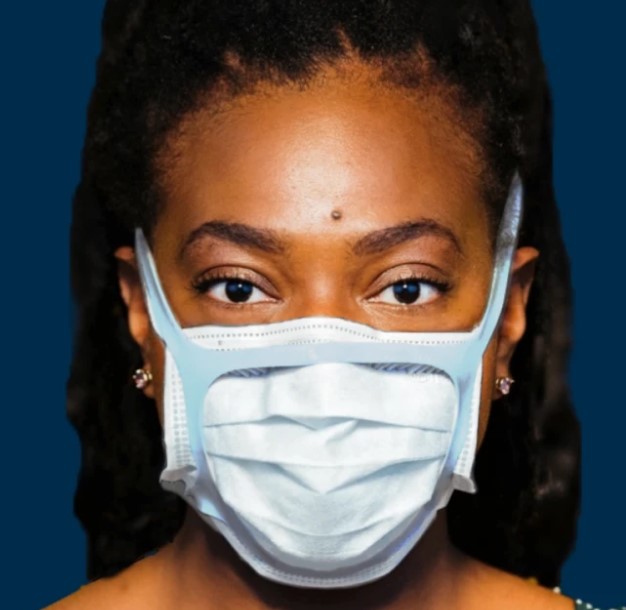
1/ On February 2, 2021 the National Personal Protective Technology Laboratory (NPPTL) published assessments for many foreign made masks, including KN95s. Some minimum #KN95 filtration results were < 26%! But others had >95%. @AbraarKaran @linseymarr @zeynep @CorsIAQ 

2/ Before we get to the results at tweet 7, you should read the introduction. Excerpts: @nataliexdean
"[T]en respirators were submitted for evaluation. The samples were tested using a modified version of NIOSH Standard Test Procedure...
"[T]en respirators were submitted for evaluation. The samples were tested using a modified version of NIOSH Standard Test Procedure...
3/ "Only particulate filter efficiency was assessed. The results of these tests are for the sample tested and may or may not be representative of a larger lot or population of similar respirators.
4/ "The results of any filter penetration test can only be used to provide a check of the product’s filter efficiency. No conclusions can be made regarding equivalency to N95 products that are NIOSH approved.
5/ "No certificates of approval were provided with the samples received. Therefore, the authenticity of the claims, that the product meets a particular international standard, cannot be validated….
"Most of these products have an ear loop design.
"Most of these products have an ear loop design.
6/ "NIOSH-approved N95s typically have head bands. "Furthermore, limited assessment of ear loop designs, indicate difficulty achieving a proper fit. While filter efficiency shows how well the filter media performs, users must ensure a proper fit is achieved."
8/ The fit of your mask is just as important as filtration. If you want top protection, you should only buy versions with a head band design, not earloops.
If you do buy a KN95, be sure it has filtration results of over 95% from this report.
If you do buy a KN95, be sure it has filtration results of over 95% from this report.
9/ Even then, that is NO guarantee that the one you buy will perform the same.
10/ Generally, my cheat sheet for #bettermasks is:
➡️Get N95 level protection with @armbrustusa (or other) Level 3 surgical mask + reusable mask fitter like @fixthemask.
➡️Beats double masking + easier to breathe.
➡️CDC says this works.
➡️Get N95 level protection with @armbrustusa (or other) Level 3 surgical mask + reusable mask fitter like @fixthemask.
➡️Beats double masking + easier to breathe.
➡️CDC says this works.
11/ I have no financial interest in these recs.
https://twitter.com/DavidLKeating/status/1349392567465598984
13/ KF94s
15/ The Envo Mask (also worn by @Don_Milton, I think, it looks like one on his Twitter photo)
store.envomask.com/envomask-n95-r…
store.envomask.com/envomask-n95-r…
16/ And if you have $249 to spend on a mask, the JustAir consumer powered air purifying respirator (PAPR). My son bought one, it's awesome. Easiest to breathe by far. Great protection. They expect NIOSH approval for a similar model this month.
myjustair.com
myjustair.com
17/ And if you don't mind a gas mask vibe, go to Grainger, Amazon, Home Depot, Lowes, etc. Search for “Half Facepiece Reusable Respirator” or a similar term and you will find many options. Many of these start at around $20 (without the necessary filters).
18/ It can be difficult to talk through these types of elastomerics compared to the medical/consumer market ones, but you will get very strong protection if you wear it correctly.
19/ P100 rated filters for these masks, which filter nearly 100% of small particles, are inexpensive and will last for a long time. Leading manufacturers of these masks include MSA, 3M, and Honeywell.
20/ If you get one of these construction/industrial masks, you only need to buy and install a particulate filter. There is no need for a filter that is rated for organic vapors to protect yourself from the virus.
Elastomerics were not designed with a pandemic in mind.
Elastomerics were not designed with a pandemic in mind.
21/ Therefore, the NIOSH certified elastomerics typically have an exhaust valve. You should cover it with a surgical mask.
And thanks to @PPEtoheros for his great advice on elastomeric masks. Any errors in my thread are my fault, not his!
It goes without saying, but obviously N95s are great too. Just make sure you understand how to wear them!
• • •
Missing some Tweet in this thread? You can try to
force a refresh






